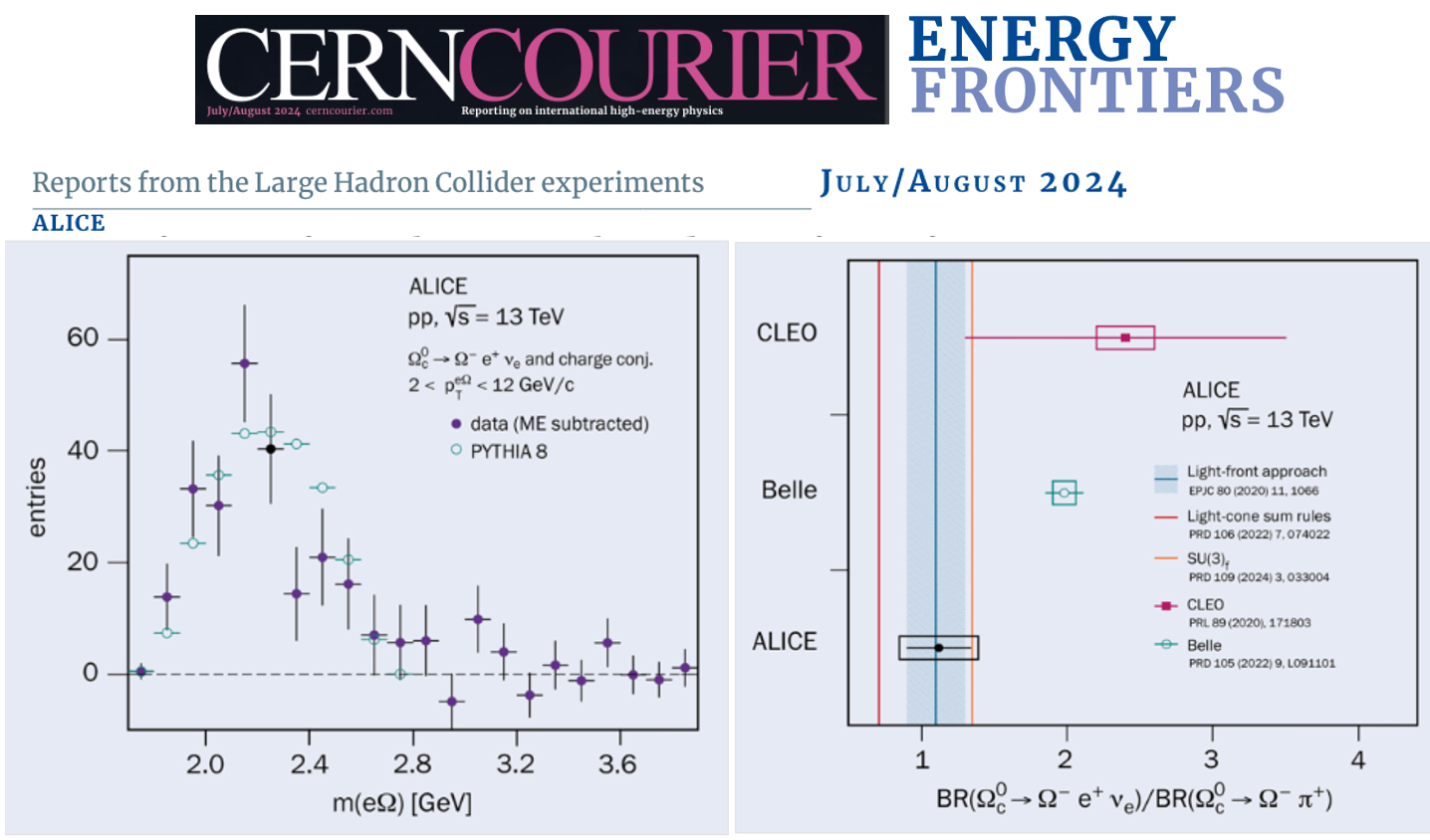
A new result from ALICE has now added fresh intrigue to interpretations of hadronisation – the process by which quarks and gluons become confined inside colour-neutral groupings such as baryons and mesons
CERN Courier (July - August 2024)
Quantum chromodynamics (QCD) is one of the pillars of the Standard Model of particle physics, but much remains to be understood about its emergent behaviours, and theoretical calculations often disagree. A new result from the ALICE collaboration has now added fresh intrigue to interpretations of hadronisation – the process by which quarks and gluons become confined inside colour-neutral groupings such as baryons and mesons.
The production of heavy charm and beauty quarks in proton–proton collisions at the LHC is a rather fast process (~7 × 10–24 s) and subject to perturbative QCD calculations. On the other hand, the transformation of heavy quarks into hadrons requires substantially more time (~3 × 10–23 s). This separation of time scales has motivated the idea that the hadronisation process of heavy quarks is independent of the colliding system and collision energy. However, the production of baryons carrying a heavy quark in proton–proton collisions at the LHC has been found to be enhanced compared to more elementary e+e– collisions. This surprising finding seems to invalidate the concept of universal hadronisation of heavy quarks, which is an important basis for calculations of particle production in QCD.
A new dimension
Heavy-flavour baryons carrying charm and strange quarks add a new dimension to these measurements. Such measurements are challenging because they suffer from low production rates. Due to the short lifetime of charm baryons (typically a fraction of a picosecond), they are usually observed through the detection of their decay products. The probability of how often they decay into a particular set of daughter particles, known as the branching ratio (BR), is poorly known for many of the strange-charm baryons. Knowledge of the precise branching ratio is crucial for interpreting the production results of these baryons.
Recently, the ALICE collaboration has measured the production of Ωc0 (css) baryons via the semileptonic decay channel Ωc0 → Ω–e+νe (and its charge-conjugate modes) as a function of transverse momentum (pT) in proton–proton collisions at 13 TeV at midrapidity (|y| < 0.8). The Ωc0 candidates are built by pairing an electron or positron candidate track with an Ω baryon candidate using a Kalman Filter vertexing algorithm. The Ω candidates are reconstructed via the cascading decay chain Ω– → ΛK–, followed by the decay Λ → pπ–. The missing momentum of the neutrino was corrected by using an unfolding technique. Figure 1 shows the invariant-mass distribution of the Ωc0 candidates.
Figure 2 compiles measurements of the decay by CLEO, Belle and now ALICE. Due to the lack of an absolute BR, results are quoted relative to the BR of Ωc0 → Ω–π+. Combined with the earlier measurement of Ωc0 → Ω–π+, the relative probability of the two decay modes is obtained: BR(Ωc0 → Ω–e+νe)/BR(Ωc0 → Ω–π+) = 1.12 ± 0.22 (stat.) ± 0.27 (syst.). The Belle and CLEO collaborations have measured this ratio to be 1.98 ± 0.13 (stat.) ± 0.08 (syst.) and 2.4 ± 1.1 (stat.) ± 0.2 (syst.). Model predictions using the light-front approach and light-cone sum rules predict values of 1.1 ± 0.2 and 0.71, respectively. Another approach calculates decay modes and probabilities of charmed-baryon decays based on SU(3)f flavour symmetry in the quark model, resulting in a computed branching fraction ratio of 1.35.
The ALICE result is consistent with theory calculations and is 2.3σ lower than the more precise value reported by the Belle collaboration. The present measurement provides constraints on the decay probabilities of the Ωc0 baryons. It demonstrates that such measurements are now possible at the LHC with a precision similar to that at e+e– colliders.
With the ongoing Run 3 at the LHC and thanks to the recent upgrades, ALICE is on the way to collecting a data sample that is about a thousand times larger for these types of analyses, which will enable more precise measurements of other decay modes. Thanks to these data, we expect to resolve the question of universal hadronisation in the near future.
Further reading
ALICE Collab. 2024 arxiv:2404.17272.
